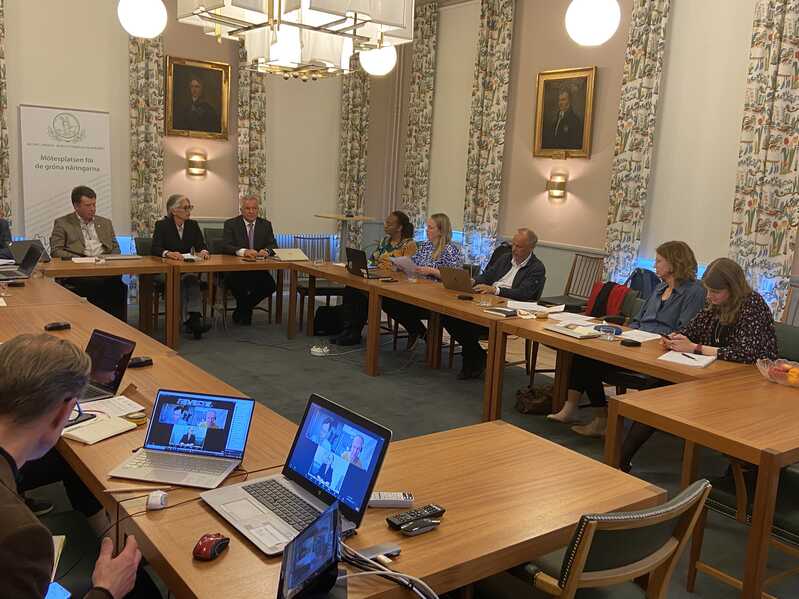In view of the latest IPCC report on mitigation, there is a current pressing need to solve the climate and biodiversity crisis. Cross-disciplinary landscape approaches appear to be essential for tackling human needs and restoring ecosystems. Nevertheless, enhancing the integration and sustainability of landscape management and restoration requires investments and initiatives, raising the question about the sources of these measures. Civil society, private and public actors endeavour to foster incentives and pathways for integrated and resilient landscape actions. Thus, what can we learn from their ongoing efforts?
Building networks, partnerships, and collaboration
Tony Simons, Executive Director, CIFOR-ICRAF, stressed that knowledge and financial support are missing when it is the most needed and impactful due to a lack of collaboration between relevant actors. He pointed out the interactivity and interdependency within a system, which is why various actors need to be engaged in adopting sustainable landscape management, such as with the comprehensive platform called Global Landscapes Forum (GLF). Public and private sectors, NGOs, research and academia, civil society, and small-scale farmers should have a voice in the debate to foster systemic and inclusive approaches. Mikhail Tarasov, Global Forestry Manager at IKEA of Sweden AB, emphasised the lack of understanding of the needs and opportunities among actors. Collaboration and partnerships are crucial to stimulate communication, to build mutual trust, to facilitate the sharing of information, and to learn from each other’s experiences at a national and international level. For example, in the opinion of Bo Lager, Senior Policy Advisor Agriculture, International Department of the Swedish Society for Nature Conservation (SSNC), the Ecological Organic Agriculture (EOA) initiative in Africa successfully adopts a multi-level perspective scheme through participatory work.
Pathways and initiatives for further sustainable, deliberate, and inclusive work
All panellists acknowledged the need to incorporate local youth in implemented measures to educate and to provide work to local populations. Building smallholder organisations is also essential to strengthen local societies’ voices in negotiating the right to food, lands, civil space, the price for commodities, and having the capacity to obtain information and knowledge that can drive the system away from poverty. As such, Duncan Macqueen, Principal researcher and leader for forest at the natural resources at International Institute for Environment and Development (IIED), claimed that small grant programs should proliferate, and the quantity of money allocated to these types of grants should be expanded to support smallholders. Lotta Samuelson, Program Manager at Stockholm International Water Institute (SIWI) Team Lead Resilient Landscapes, expressed that when developing a collaboration, all stakeholders concerned should be invited to the discussion to give room to different ideas. She also underlined that policies and market incentives should be established accordingly to the needs of smallholders while restoring and preserving landscapes.
If we don’t look at vested self-interest in promoting nature, we will struggle, we will suffer.” Tony Simons
Additionally, Tony Simons asserted that collaboration is a key aspect of flattening the hierarchy between actors, facilitating their relationships. To create more, meaningful, deliberate, and impactful measures, all panellists also mentioned the need to implement cross-sectoral approaches, to be more systemic since sectors such as food, transport, energy, water, and forest, are interfacing and interacting with each other. Finally, Tony Simons evoked the prominence of setting time-based milestones on account of a system’s perpetual movement and evolution.
A need for disseminating evidence and analytics
All panellists agreed that transparency concerning evidence, data, and information is crucial to sustainably restoring and to further utilising landscapes. Tony Simons highlighted the current asymmetry issue regarding the amount of data and knowledge at the commercial stages due to competitiveness. He further elaborated that information should be published, e.g., on datasets, to ease the translation of science into practices by rendering it accessible to stakeholders working in the field. Duncan warned about the current market tendency to homogenise production systems and uniform quality. Hence, he pinpointed the importance of working with the diversification of climate resilience. Anders Malmer, the International Coordinator at Swedish Forest Agency and Adjunct professor at SLU, outlined the need to contextualise the solutions as landscapes and other externalities vary from place to place. Bo Lager underscored the potential effectiveness of introducing cost-efficient and medium-scale new technology to nurture smallholders and small-medium entrepreneurs’ competitiveness and cost-efficiency.
In a nutshell, holistic approaches, aggregating multiple actors and disciplines, need to be considered through collaboration and partnerships to improve the knowledge production, policies and practices aiming at sustainable and prosperous utilisation of our landscapes.
The webinar titled “Collaboration in Landscapes for Sustainable Development” organised by KSLA (The Royal Swedish Agricultural Academy), SIANI (The Swedish International Agricultural Network Initiative), Focali and SLU (The Swedish University of Agricultural Sciences) took place on 27/04/2022.
Reporting by David Mingasson, Master’s student at Aalborg University in Copenhagen.
